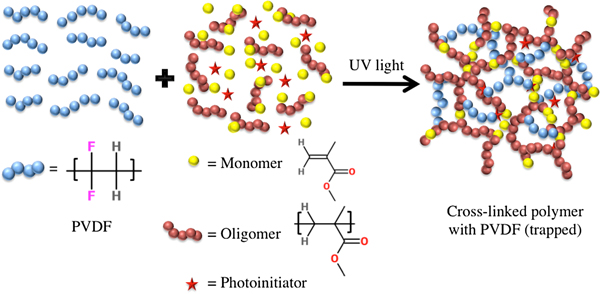Crossref Citations
This article has been cited by the following publications. This list is generated based on data provided by
Crossref.
Chen, Cheng
Wang, Xi
Wang, Yan
Yang, Dandan
Yao, Fangyi
Zhang, Wenxiong
Wang, Bo
Sewvandi, Galhenage Asha
Yang, Desuo
and
Hu, Dengwei
2020.
Additive Manufacturing of Piezoelectric Materials.
Advanced Functional Materials,
Vol. 30,
Issue. 52,
Mansour, R.
Omoniyi, O. A.
Reid, A.
Liang, L.
O'Leary, R.
and
Windmill, J. F. C.
2020.
A Novel 3D-Printed (0-3) Piezocomposite Material for Sensing Applications.
p.
1.
Jeong, Chang Kyu
2020.
Toward bioimplantable and biocompatible flexible energy harvesters using piezoelectric ceramic materials.
MRS Communications,
Vol. 10,
Issue. 3,
p.
365.
Omoniyi, O.A.
Mansour, R.
Reid, A.
Liang, L.
O'Leary, R.
and
Windmill, J. F.C.
2020.
3D-printing of a piezocomposite material with high filler content for transducer applications.
p.
1.
Singholi, Ajay K. S.
and
Sharma, Ajay
2021.
Advances in Engineering Materials.
p.
677.
Song, Hoseong
Li, Hai
and
Lim, Sooman
2021.
Fast 3D Digital Light Process Printing of PVDF‐HFP Composite with Electric In Situ Poling System for Piezoelectric Applications.
Macromolecular Materials and Engineering,
Vol. 306,
Issue. 10,
Ikei, Alec
Wissman, James
Sampath, Kaushik
Yesner, Gregory
and
Qadri, Syed N.
2021.
Tunable In Situ 3D-Printed PVDF-TrFE Piezoelectric Arrays.
Sensors,
Vol. 21,
Issue. 15,
p.
5032.
Malley, Steven
Newacheck, Scott
and
Youssef, George
2021.
Additively manufactured multifunctional materials with magnetoelectric properties.
Additive Manufacturing,
Vol. 47,
Issue. ,
p.
102239.
Zhao, Wenyu
Wang, Ziya
Zhang, Jianpeng
Wang, Xiaopu
Xu, Yingtian
Ding, Ning
and
Peng, Zhengchun
2021.
Vat Photopolymerization 3D Printing of Advanced Soft Sensors and Actuators: From Architecture to Function.
Advanced Materials Technologies,
Vol. 6,
Issue. 8,
Caldona, Eugene B.
Dizon, John Ryan C.
Viers, Robert Andrew
Garcia, Vincent Joseph
Smith, Zane J.
and
Advincula, Rigoberto C.
2021.
Additively manufactured high-performance polymeric materials and their potential use in the oil and gas industry.
MRS Communications,
Vol. 11,
Issue. 6,
p.
701.
Sotov, Anton
Kantyukov, Artem
Popovich, Anatoliy
and
Sufiiarov, Vadim
2022.
A Review on Additive Manufacturing of Functional Gradient Piezoceramic.
Micromachines,
Vol. 13,
Issue. 7,
p.
1129.
Wang, Peng
Xu, Zhiqiang
Liu, Yulong
Sheng, Xianxian
Dong, Jiaqi
Lu, Zhanpeng
Shan, Ali
and
Lyu, Shuguang
2022.
Mechanism of trichloroethylene degradation in Fe(II)-activated peroxymonosulfate coupled with citric acid system in the presence of surfactants.
Environmental Science and Pollution Research,
Vol. 29,
Issue. 35,
p.
53176.
Liu, Chun-Lei
Du, Quanpei
Zhang, Chao
Wu, Jia-Min
Zhang, Guangzu
and
Shi, Yu-Sheng
2022.
Fabrication and properties of BaTiO3 ceramics via digital light processing for piezoelectric energy harvesters.
Additive Manufacturing,
Vol. 56,
Issue. ,
p.
102940.
Zeng, Yushun
Jiang, Laiming
He, Qingqing
Wodnicki, Robert
Yang, Yang
Chen, Yong
and
Zhou, Qifa
2022.
Recent progress in 3D printing piezoelectric materials for biomedical applications.
Journal of Physics D: Applied Physics,
Vol. 55,
Issue. 1,
p.
013002.
Chang, Sang-Mi
Kang, Chong-Yun
and
Hur, Sunghoon
2022.
Short Review of 3D Printed Piezoelectric Sensors.
JOURNAL OF SENSOR SCIENCE AND TECHNOLOGY,
Vol. 31,
Issue. 5,
p.
279.
Cardoso, V.F.
Costa, C.M.
Correia, D.M.
Carvalho, E.O.
Peřinka, N.
Martins, P.M.
Meira, R.M.
Marques-Almeida, T.
Rodrigues-Marinho, T.
and
Lanceros-Mendez, S.
2022.
Organic Ferroelectric Materials and Applications.
p.
375.
Tu, Ruowen
and
Sodano, Henry A.
2023.
Highly Stretchable Printed Poly(vinylidene fluoride) Sensors through the Formation of a Continuous Elastomer Phase.
ACS Applied Materials & Interfaces,
Vol. 15,
Issue. 18,
p.
22320.
Roshdy, Mohamed
Chen, Tian
Nakhmanson, Serge
and
Bilal, Osama R.
2023.
Tunable ferroelectric auxetic metamaterials for guiding elastic waves in three-dimensions.
Extreme Mechanics Letters,
Vol. 59,
Issue. ,
p.
101966.
Mahato, Sanjeev Kumar
Gupta, Vivek Kumar
Kumar, Atish
Kumar, Narendra
Trehan, Rajeev
and
Singh, Ravi Pratap
2023.
Material selection considerations for 3D printing of electrically conductive polymer composites: A review.
Materials Today: Proceedings,
Wen, Jie
Wu, Wenqiang
Xie, Zhengtian
and
Wu, Jinrong
2023.
Development of Piezoelectric Elastomers and Their Applications in Soft Devices.
Macromolecular Materials and Engineering,
Vol. 308,
Issue. 11,





